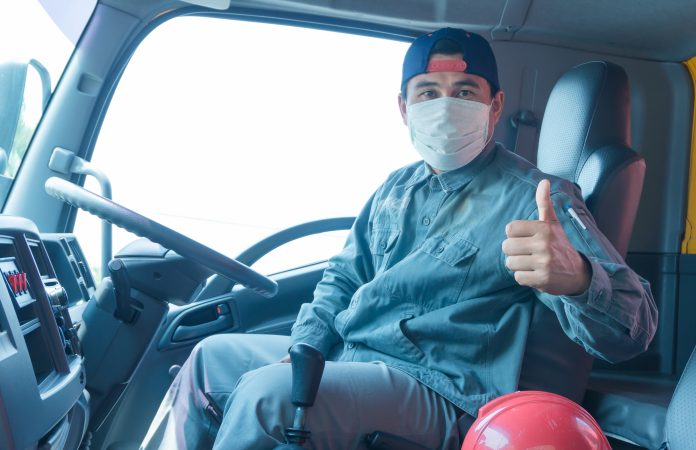
The COVID-19 pandemic has turned all our lives upside down. Office work may be changed forever thanks to the pandemic. As the country enters a heavy lockdown in mid-January of 2021, permanent long term changes to our society may have already started taking place. COVID-19 is altering tried and true institutions of work, testing our health care system, and exposing underlying mental health care issues of our nation.
Only a fraction of employees who began working from home during the COVID-19 pandemic have returned to full-time office work. This has ramifications for how workplaces are run and even where we live, and whether the small businesses that depend on our office buildings and workers can survive.
This social isolation jeopardizes our health on many levels. Mental health and physical health and our general wellbeing are at risk in ways we have not had to deal with before. Society is changing.
“It seems remote work is here to stay, or at least the majority of us want it to be,” said Heather Haslam, vice-president of marketing at ADP Canada, a human resources company. Surveys suggest that over 5 million Canadians are working from home due in large part to the pandemic. Surprisingly only 27% said in one survey that they would like to return to the office. Many however would embrace a hybrid blend between working from home and the office workspace.
An employment lawyer says many corporations are worried about “time theft”. Employees who “steal time” may be in the minority. How do you police or know just who might be watching TV, walking the dog, or helping their children with online learning when they are supposed to be working? Conversely, many home workers say they are working more hours and therefore deserve more pay. One obvious thing is that home office workers are saving on commute costs, parking, downtown lunches, and even extensive work wardrobes. Conversely, the cost of their internet usage may be increased.
Students say that remote learning does not fulfill their needs in the same way that classroom learning does. Old fashioned values in education remain tried and true.
Businesses that depend on office workers for patronage may never rebound or have already had to close their doors. Urban transit has suffered losses too. How many return to office work after the pandemic is anyone’s guess.
The BBC in England is imagining the “future office”, their leading HR people say “If we can move past decades of orthodoxy about 9-to-5, office-centric work, there’s an opportunity to retain the best parts of office culture while freeing ourselves from bad habits and inefficient processes, from ineffective meetings to unnecessary bureaucracy. Every leader believes they can do better, and things can move faster: this is their chance.”
Furthermore, a British survey says, a majority of workers never want to go back to the old way of working. Only 12% want to return to full-time office work, and 72% want a hybrid remote-office model moving forward. Perhaps COVID-19 just accelerated needed change?
This quantum leap change was enabled by a combination of modern computers, smartphones, video conferencing, and various platforms of social media. If the pandemic had come 10 years sooner, most if not all of this change would not have been technologically possible.
Social distancing and isolation have created a myriad of health concerns. Being socially connected in meaningful ways essential for health and survival. COVID-19’s arrival created increased worry, stress, uncertainty, economic hardship, isolation, and loneliness, just to name a few. These times are difficult for most everyone, but for some, it is the tipping point, plunging them into darkness, depression, and the potential of suicide.
Already at risk are the marginalized in our society. The onset of the pandemic heightens concerns for these individuals who already risk poor health outcomes, and preexisting conditions of social isolation, and loneliness.
As we struggle through the pandemic, we are all fraught to some extent with anxiety, stress, worry, and depression.
Canada’s Mental Health Associations have issued numerous bulletins as to how the pandemic is affecting our society. COVID-19 negatively impacts Canadians’ mental health, with many seeing their stress levels double since the onset of the pandemic. People are struggling with fear and uncertainty about their own health and their loved ones’ health, concerns about employment and finances, and the social isolation that comes from public health measures such as quarantining and physical distancing.
Many have been struck with increasing suicidal thoughts and feelings. This is exacerbated in subgroups of the population, including parents, those suffering existing illness or mental health issues, Indigenous people, and those with a disability or who identify as LGBTQ+. This is according to a new nationwide survey on the mental health impacts of COVID-19, released by the Canadian Mental Health Association (CMHA).
Alcohol and drug consumption are on the rise through the pandemic, as are other addictive behaviours.
The United Nations has called violence against women and girls a “shadow pandemic” as the COVID-19 crisis fuels social isolation and tensions caused by concerns over health, safety, and financial security.
Resilience and survivability are essential human traits. As the pandemic continues to exert pressure on all of society, change has become our mantra. How we cope is an individual mechanism, but we as a society must also cope as a unit, lest we implode.
As we struggle with constant adjustments, a primary one has been that adjustment to social distancing and isolation. The human-animal is a social being, socialization is a basic need. We have all been tested, especially so those who are marginalized and those with preexisting health issues. Hopefully, society and our health care system will be there for them and everyone else in need through these trying times.


















